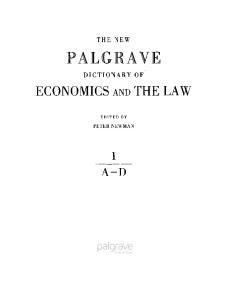Vertical integration in medical education: the broader perspective
- PDF / 585,047 Bytes
- 5 Pages / 595.276 x 790.866 pts Page_size
- 19 Downloads / 316 Views
(2020) 20:509
REVIEW
Open Access
Vertical integration in medical education: the broader perspective Marjo Wijnen-Meijer1* , Sjoukje van den Broek2, Franciska Koens3 and Olle ten Cate4
Abstract Curricular integration represents collaborations between disciplines to establish a coherent curriculum and has become the dominant recommendation for medical education in the second half of the twentieth century. Vertical integration specifically is the integration between the clinical and basic science parts throughout the program. Vertically integrated curricula present basic sciences imbedded in a clinical context from the start of medical school. The authors briefly discuss vertical integration in relationship with context theory, motivation theory, professional identity formation, transition to practice and the continuum of education and practice. They conclude that vertical integration, rather than horizontal integration, extends far beyond curriculum structure. They consider vertical integration a philosophy of education, with impact on students’ maturation and engagement with the profession, and which applies not only to undergraduate education but to the lifelong learning of professionals. The definition of vertical integration as “an educational approach that fosters a gradual increase of learner participation in the professional community through a stepwise increase of knowledge-based engagement in practice with graduated responsibilities in patient care” is more comprehensive than its older conceptualization.
Integration in medical education Integration has been a popular concept in medical education for decades. An integrated curriculum, focusing on general objectives of medical education, rather than a curriculum merely composed of a stack of separate courses and clerkships with their own culture, professors, rules, and exams, featured in Harden’s SPICES model in 1984 as a key component (the I) of modern medical education [1]. But curricular integration has been advocated long before that important publication. In the 1950s, the Association of American Medical Colleges (AAMC) specifically stated that the objectives of undergraduate medical education should not include detailed systematic knowledge of the various basic sciences separately anymore. Instead, the AAMC spelled out a list of general goals for the medical school curriculum, all focused on learning necessary knowledge and basic skills * Correspondence: [email protected] 1 Technical University of Munich, TUM School of Medicine, TUM Medical Education Center, Ismaninger Straße 22, 81675 Munich, Germany Full list of author information is available at the end of the article
related directly to patient care and not as ends in themselves [2]. In the decades to follow, many medical schools made curricular revisions offering forms of integration. An excellent description of today’s use of integration in medical education is provided by Brauer & Fergusson [3]. The authors describe horizontal integration as the “integration across disciplines but w
Data Loading...











